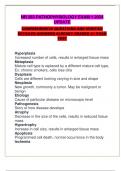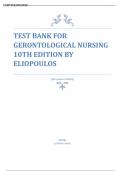Exam (elaborations)
NR 283 PATHOPHYSIOLOGY EXAM 1 2024 UPDATE COMPREHENSIVE QUESTIONS AND VERIFIED DETAILED ANSWERS ALREADY GRADED A+ EXAM TEST,,,,Alpha
- Course
- Institution
NR 283 PATHOPHYSIOLOGY EXAM 1 2024 UPDATE COMPREHENSIVE QUESTIONS AND VERIFIED DETAILED ANSWERS ALREADY GRADED A+ EXAM TEST,,,,Alpha
[Show more]




